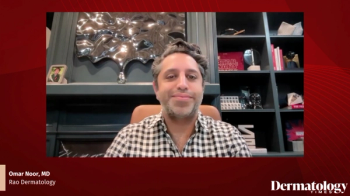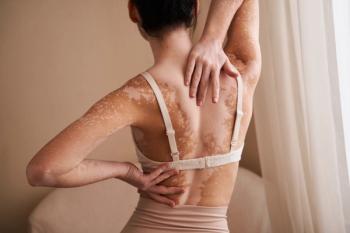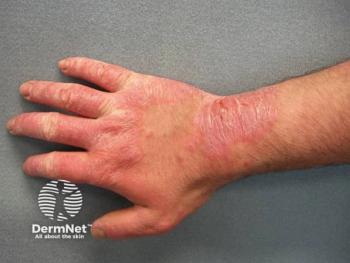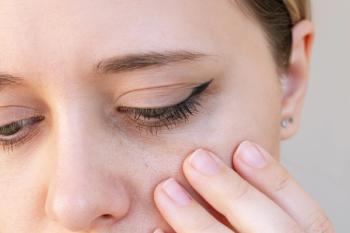
- Dermatology Times, July 2025 (Vol. 46. No. 07)
- Volume 46
- Issue 07
A New Canvas for Conversations in Dermatology
Art transforms dermatology by fostering dialogue, enhancing patient connection, and challenging biases, as medical students explore creative expression in health care.
I did not go into medicine to host art shows. At first, I did not have the money, the training, or even the vision to do so. I simply knew that art was a personal outlet—a way to relieve stress and express myself. I never imagined it could become a powerful tool for addressing humanitarian issues in medicine.
During one of my first shadowing experiences with Harold Brody, MD, an Emory University School of Medicine faculty member, at his private cosmetic dermatology practice in Atlanta, Georgia, I studied all the branches of the facial nerve in anticipation of being quizzed between seeing patients. As I nervously traced out the anatomy, he paused at his desk and asked, “So you’re here because you’re interested in dermatology—I get that. But what are you going to bring uniquely to the field?” It was the kind of question that belongs at the heart of a personal statement, but I did not know how to answer that yet.
Sensing my uncertainty, he continued, “OK, let’s start with what you are good at and what you enjoy.” I mentioned my love for art. Knowing his background in theater, I explained how art can express complex and often unspoken emotions, spark dialogue, and bring taboo topics to light, like many great musicals do. He encouraged me to consider how that sentiment could intersect with dermatology.
Over the next year, I began contributing medical illustrations for patient education materials for the free dermatology clinic I founded. I also collaborated on national projects, such as In Plain Sight, a visual guidebook supported by the American College of Obstetricians and Gynecologists addressing racial equity in women’s health. Even for my TEDx talk on the psychology of social networking for students, I relied on my drawings to avoid copyright infringement. Slowly, I began to see the potential for art to humanize and deepen conversations in medicine.
It was not until I joined the American Academy of Dermatology (AAD) Expert Resource Group on LGBTQ+ and Sexual and Gender Diverse Health as one of their student fellows that I had the chance to fully bring art into dermatology. Given how competitive the field is—trending toward research over service per recent past results1—I wanted to create a space where students could contribute meaningfully and feel seen contributing to conversations in dermatology. With support from John Zampella, MD, FAAD, the group’s chair at the time, we launched the AAD Call for Art at the 2025 AAD Annual Meeting with a theme centered around identity, medicine, and dermatology. We received nearly 25 submissions from across the United States and the Caribbean, ranging from geode and metalwork to spoken word poetry and photography. Students shared stories of their cultures, their insecurities, and their journeys with conditions like atopic dermatitis—all through creative expression. While the conference included high-level discussions on research topics such as complications of gender-affirming cosmetic procedures, the art show added a vital dimension of human connection. It offered a form of academic relief and recentralized our purpose, reminding us that we are defined by more than our publications and knowledge.
With the event’s success, we are now working to publish the collection and exploring future programming with the AAD. I organized a second show for the San Francisco Dermatological Society’s 2025 annual meeting in June in California, focusing on cultural expression and skin of color. I am developing pieces using clinical photo libraries from Johnson & Johnson and collections of photos from murals within cultural enclaves in San Francisco to spark dialogue during the event.
Art has proven benefits in dermatology—enhancing visual diagnostic skills, fostering team collaboration, improving resident well-being, and promoting cultural competence. Through my journey, including pieces like my abstract depiction of the Mothers of Gynecology, I finally found the answer to Brody’s question: I want to pursue dermatology to dismantle stereotypes, challenge bias, and combat misinformation by using creative media such as medical media and art to foster dialogue among patients, students, and providers.
Growing up with ichthyosis vulgaris and teased for my “dinosaur hands,” I use ink and abstract linework to reclaim the confidence this condition once took from me. If we can utilize art to give patients this space to communicate and help providers remember who they are beyond the white coat, then we can reprioritize humanism in both medicine and dermatology.
Mitchell Hanson is a fourth-year MD/MPH candidate at the Medical College of Georgia, with interests in public health, sexual and gender minority topics, and dermatology.
Reference
- Olugbade ID, Zhou AE, Jain NP, Gronbeck C, Feng H, Grant-Kels JM. Ethics of evaluating dermatology residency applicants based on research productivity. J Am Acad Dermatol. 2025;93(1):311-312. doi:10.1016/j.jaad.2024.04.055
Articles in this issue
5 months ago
Dermatology Times July 2025 Print Recap5 months ago
Is AI Transforming Skin Care?5 months ago
The Value of RAD, According to CliniciansNewsletter
Like what you’re reading? Subscribe to Dermatology Times for weekly updates on therapies, innovations, and real-world practice tips.



















